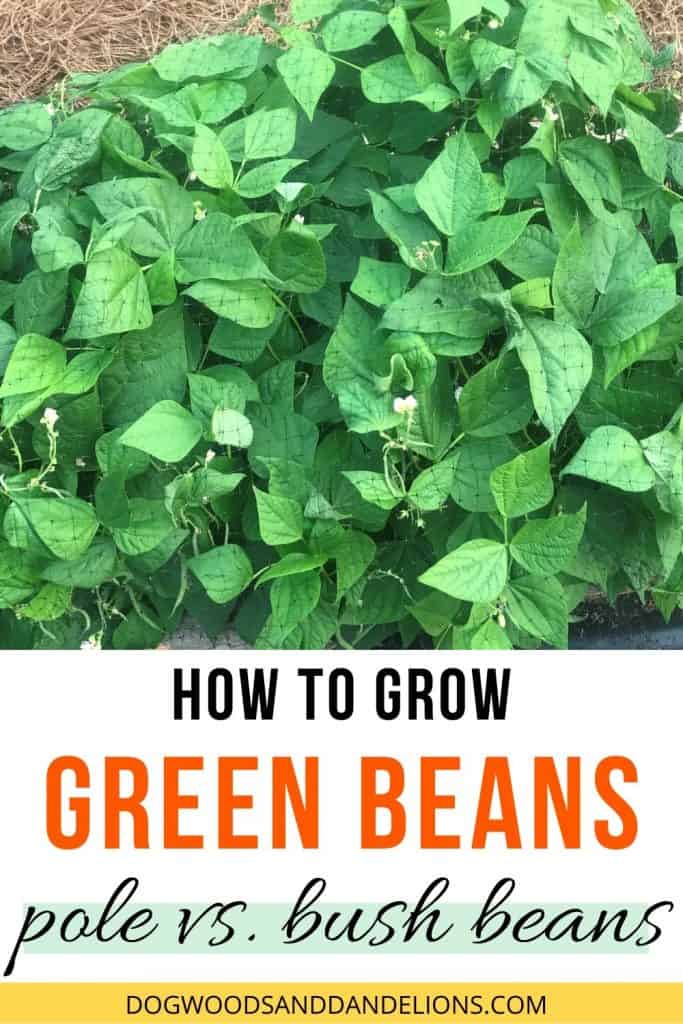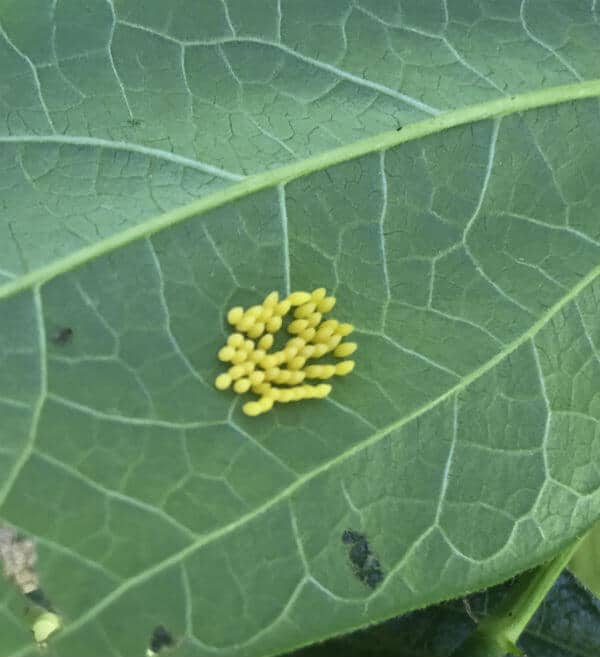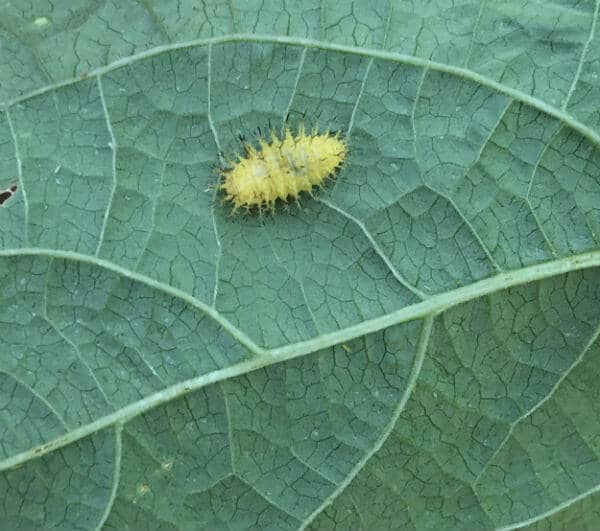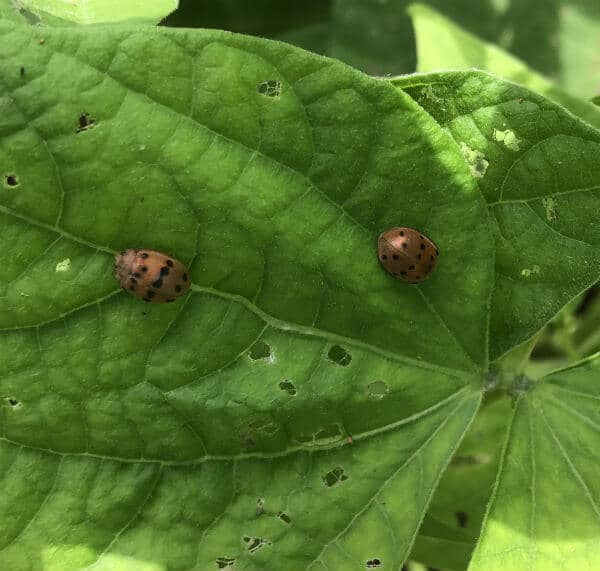How to Grow Green Beans
Green Beans are an easy vegetable for a beginner to grow. With so many different varieties, you are sure to find several that you love. This post shares how to grow green beans as well as the types of green beans you can grow and pests and diseases that may come along.
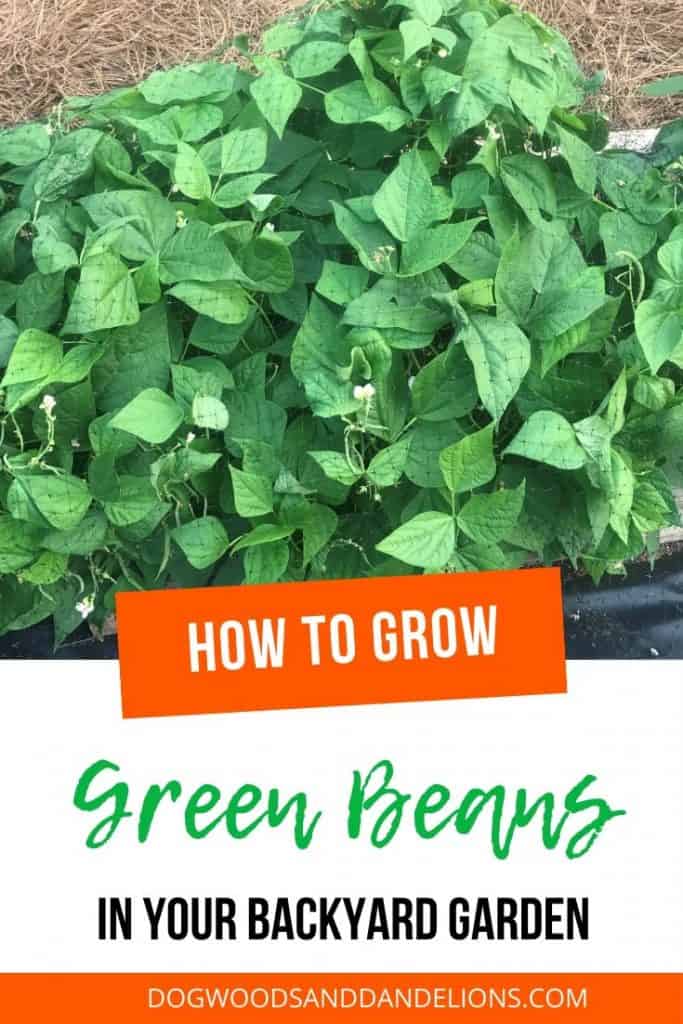
Affiliate Disclosure: Please note that some of the links in this article may be affiliate links and I may receive a small commission if you purchase something through a link. It will not change your cost. As an Amazon Associate, I earn from qualifying purchases. For more information, see my disclosures page.)
Types of Green Beans
There are so many types of green beans to choose from. You have bush beans and pole beans, french filet beans, runner beans, yard long beans, and Romano beans. Besides green beans, there are also purple and yellow beans.
With so many different types, it can be hard to choose. Some of the differences are listed below that may help you make a decision about what type of green bean to grow in your garden. Of course, if you have room for several varieties, I definitely suggest planting more than one kind.
Pole vs. Bush Green Beans
If you aren’t sure whether to grow pole beans or bush beans, lets consider the pros and cons of each. Bush beans tend to mature over a two to three week period so they are perfect if you want a lot of beans ready at once to can or preserve. They also don’t need to be staked, and are better for smaller gardens.
The downside to bush beans is that after several weeks, they don’t produce nearly as many beans, so it may be difficult to harvest enough for a meal. You may need to replant more beans every few weeks to have a decent sized harvest. (However, there are a few new varieties of bush beans that promise longer harvest times.) Bush beans also grow low to the ground so you have to bend over to pick them. This can be hard on your back, especially for the elderly.
Pole beans on the other hand, don’t produce as many beans at one time, but you can harvest them over a longer period, usually all summer. Pole beans do have to be staked or trellised for support, but this also makes them easier to pick. (My favorite way to trellis them is by using several stakes and this trellis netting.) Usually one planting is enough to allow you to harvest beans all summer long.
Romano, French Filet, Runner, and Yard Long
Romano, French filet, Runner, and yard long beans are another way to classify beans by type. Both Romano and French filet beans come in bush and pole varieties while Runner and yard long beans are strictly pole bean varieties.
Romano beans are usually meaty beans with a flat pod. Many of these types are stringless. There are purple and yellow varieties of Romano beans as well as the standard green.
French filet beans are a slender bean that is perfect for sauteeing. (This is my favorite type of green bean!) Picked young and sauteed with some garlic, these beans are one of the best things you’ll ever eat. Since they are so tender, they don’t hold up as well to canning.
Runner beans grow really tall, like 8-10 feet tall. They must be trellised with a tall, sturdy trellis. Most varieties have beautiful blooms and are sometimes grown just for those blooms, however the beans are edible. Hummingbirds love the flowers on runner beans.
Yard long beans are another type of pole bean that will be the talk of your neighborhood. These beans grow up to 18 inches long. There are green varieties as well as a burgundy type. Most are tolerant of hot weather.
One other thing to note-When picking out seeds from a seed catalog, if the green bean variety doesn’t say it’s stringless, it’s probably not!? Whether that makes a difference is up to you. Some people don’t mind stringing beans, but it’s not a chore I enjoy so I always choose stringless.

How to Plant Green Beans
Green beans should always be started outdoors directly in the ground as soon as the danger of frost has passed. They should be planted in full sun. Many seed packets will recommend a specific spacing for the seeds. However, I plant my seeds in wide rows so I can grow more beans in less space. This also makes it much easier for little children to help, since spacing isn’t as critical. I’ve been planting in wide rows for years without any trouble. (For more information on planting in wide rows, check out the book The Vegetable Gardener’s Bible by Edward C. Smith.)
To plant green bean seeds, dig a shallow trench in the garden with a spade or hoe. Sprinkle the seeds in the trench and cover with soil. They should be about an inch deep in the ground. Press down lightly on the soil to be sure all seeds are covered. Water well.
Most seeds should sprout in about 10 days. Keep the soil moist but not sopping wet. Too much water can invite diseases or cause the seeds to rot. While the beans are growing, try to water at the base of the plants when possible. Overhead watering can also lead to disease. Keep an eye on the plants when you first start to see blooms. It usually doesn’t take long for the blooms to turn into beans.
How To Harvest Green Beans
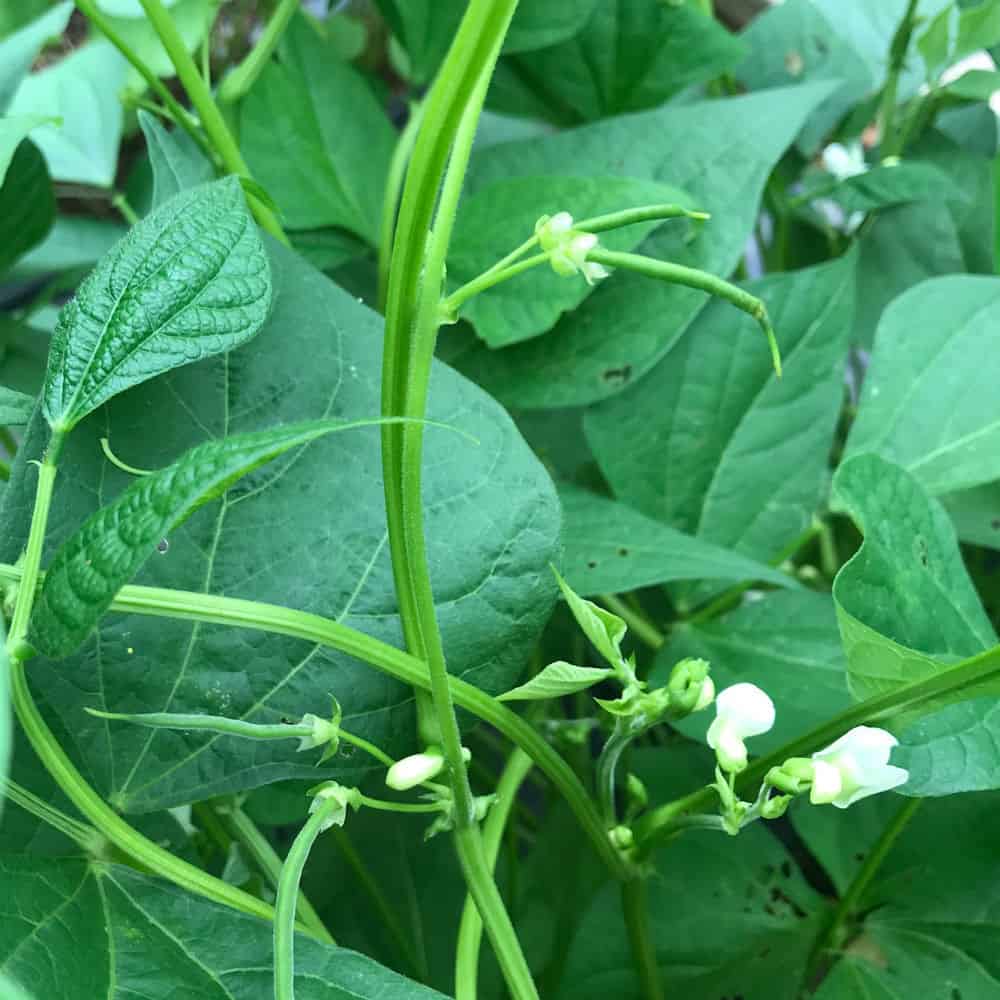
Green beans can be picked at many different stages, but I prefer to pick them small. Some claim the flavor isn’t as good, but I don’t like tough beans. Most of the time they can be gently pulled from the vine, however, you can also cut them off. Be careful not to pull up the entire bean plant when picking. It’s usually best to hold the vine in one hand and pick the beans off with the other.
Keep picking beans regularly. If you find beans on the vines that are too large for your liking, pick them and throw them away. If you leave the large beans on the vines, the plants will stop producing. They will focus their energy on turning the remaining beans to seed for the next year.
Beans tend to stop producing when it gets extremely hot. They may still bloom, but the blooms will fall off. Keep them well watered and mulched, and most pole beans will resume producing when the temperature cools off. Since bush beans only produce for a few weeks, they may stop producing all together if it stays hot.
Pests and Diseases
Green Beans tend to have quite a few pests and diseases. The bugs seem to like the plants almost as much as we like the beans. However, I find they are still worth growing as the taste of homegrown beans is so much better.
Pests
Rabbits love to eat green bean plants and they will munch down an entire row overnight. If this does happen to you, I suggest leaving the beans alone. If you can get a handle on the rabbit problem, the beans will often come back.
Deer are also quite fond of green beans. I’ve tried cayenne pepper sprinkled on my plants to keep both the rabbits and the deer from eating them. The downside to the cayenne pepper is that it has to be reapplied after every rainfall. And occasionally, I’ve noticed that it will burn the leaves of my plants.
Bean Beetles are another green bean pest in the garden. It seems they show up overnight and devour beans in a hurry. You’ll know you have a problem with bean beetles if you find clusters of yellow eggs on the underside of the leaves. Oftentimes, you will notice the leaves have been eaten long before you realize you have a problem.
If you do find the eggs, I recommend squishing them. They will quickly hatch into larvae, which are fuzzy looking yellow critters. From there, the larvae will turn into beetles, which look similar to lady bugs only they are a yellowish-orange or copper color. (See pictures above.)
As a last resort, you can use Neem Oil or Diatomaceous Earth, both of which are acceptable for organic gardening. You must get both the top and the underside of the leaves to completely kill the beetles. Before using any pest control methods, please do your own research to be sure you are comfortable using that product.
For more information on dealing with green bean pests, check out 4 Ways to Get Rid of the Bad Bugs in Your Garden.

Diseases
There are quite a few diseases that can plague green beans. However, in a home garden, the most common one is powdery mildew. It shows up as a powdery white substance on the leaves. The spores are spread by the wind and it is common in areas that are warm and humid. Powdery mildew can stunt the growth of the plants and cause them to produce less beans, but it isn’t toxic to humans so the beans are safe to eat.
To treat powdery mildew, you can make a spray of one tablespoon baking soda and one-half teaspoon of a liquid, non-detergent soap mixed with one gallon of water. Spray the mixture liberally on the tops and undersides of the plants.
Another treatment method that has been recommended is to spray the plants with milk. Yes, regular milk. Mix 1 part milk to 3 parts water and apply liberally to the plants. It is always best to apply mixtures such as these when the sun is not directly overhead so as to avoid burning the leaves of your beans.
Neem oil has also been used to treat powdery mildew, so if bean beetles are a problem, you can solve two problems at once by using it on your bean leaves.
Other diseases that can impact your green bean crop include mosaic viruses, leaf spot, and several types of blight. These are too numerous to explain here, but with proper crop rotation, most of these can be avoided.
Favorite Varieties
I love growing green beans. They are one of my top 3 favorite thing to grow along with lettuce and zucchini. Homegrown green beans are much fresher tasting and so much more tender than anything you can buy at the grocery store. Needless to say, I have quite a few favorite varieties.
Favorite Varieties of Bush Beans
Blue Lake is a popular heirloom bean that is always a favorite. (It also comes in a pole variety.) It matures quickly and produces lots of beans at one time. This bean has that classic green bean flavor everyone loves. They have white seeds inside and are great for fresh eating or for canning. These are considered a typical string bean.
Maxibel is French filet type green bean. The beans are thin and straight and stringless. They produce lots of beans at once on plants that usually don’t reach two feet tall.
Soleil is a yellow French filet bean that looks great canned or pickled with green beans. These taste great and make any meal more special.
Velour is a purple French filet variety that produces beans about 5 inches long. The plants are fairly disease resistant and produce heavy crops of stringless beans. Once cooked, the purple color changes to green.
Favorite Varieties of Pole Beans
Fortex is my favorite pole bean variety. These beans are longer than most (10″) but they are still stringless. The plants grow to about 6 feet tall and they produce heavy yields all summer. Fortex has brown seeds inside the dark greed pods. This is another french filet variety that is wonderful sauteed with some garlic. Often this is considered a “gourmet” green bean.
Cobra is another one of my favorites. The blooms are a gorgeous purple color followed by lots of stringless 7″ beans. These usually produce all summer long and are good for fresh eating or for canning.
What’s Your Favorite Variety of Bean?
You may have noticed that a large number of my favorite varieties of green beans tend to be French filet types. That is just the kind my family prefers. However, I know there are many other delicious varieties out there that are favorites of others. If you have a favorite kind, I would love for you to let me know. I’m always on the lookout for new things to try, so help a girl out, and share your fave!
Related Posts
